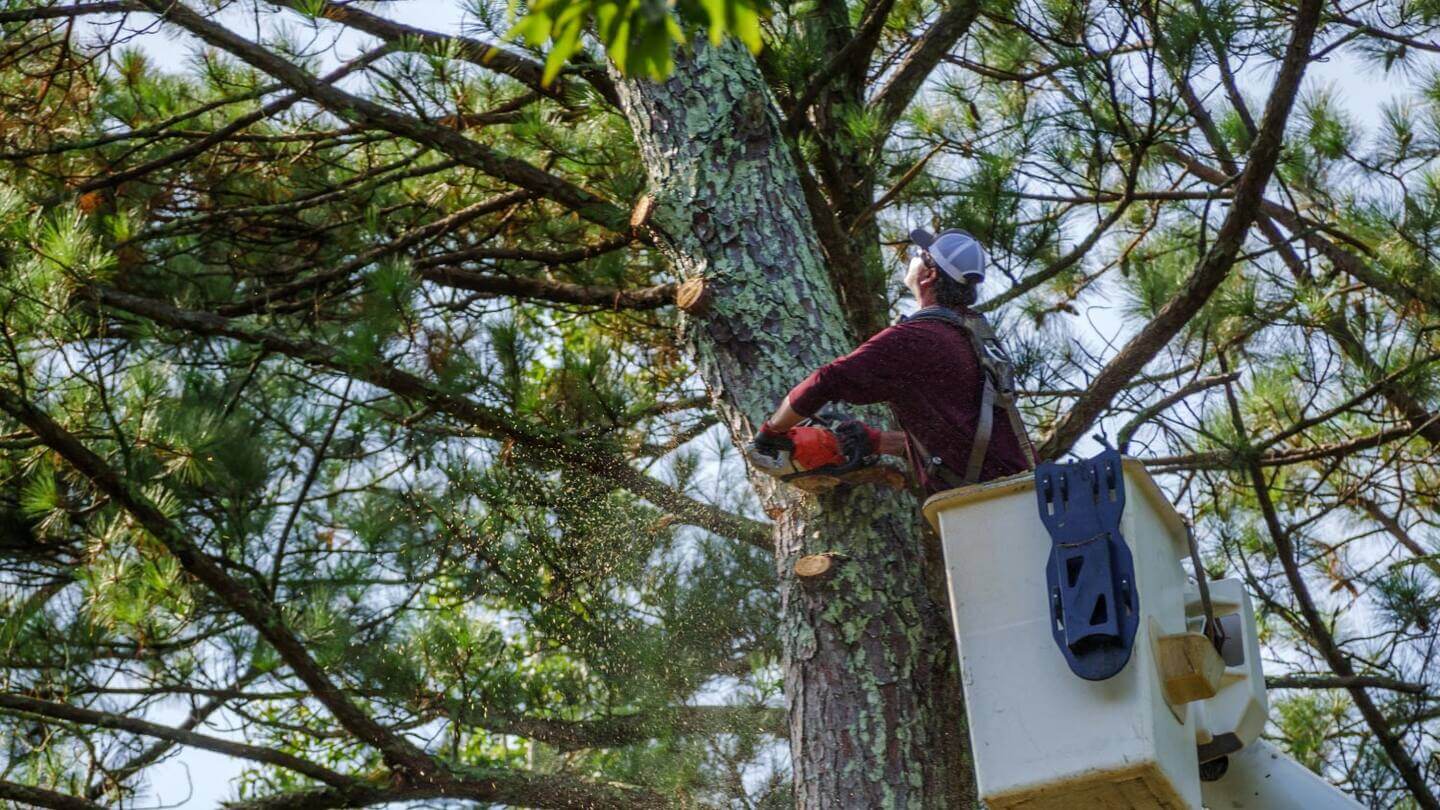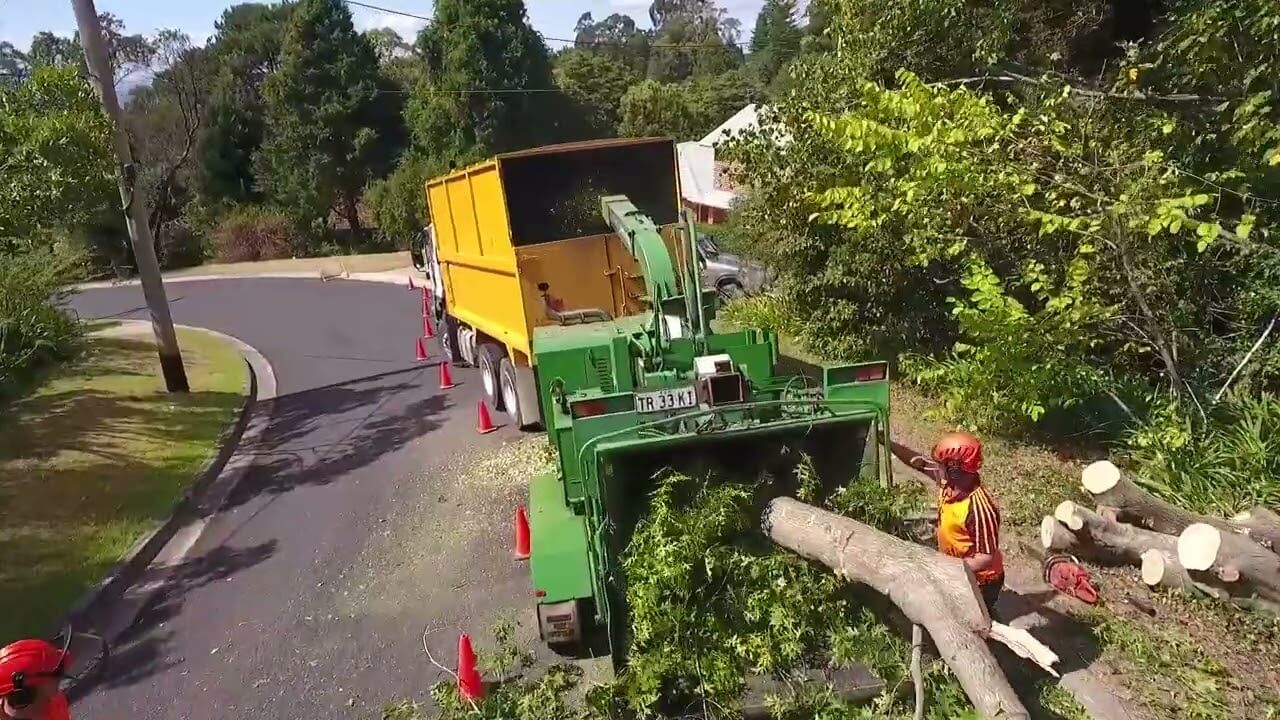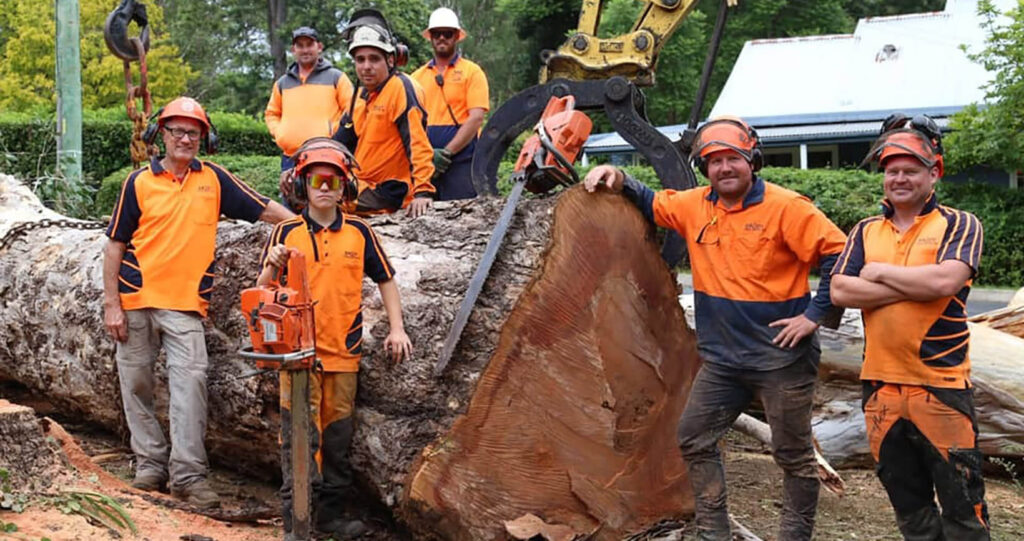In the Hills District, choosing the right arborist for tree removal is a decision that should not be taken lightly. Trees are important for the environment and the aesthetic appeal of our neighborhoods, so it is crucial to hire a professional who understands the role of an arborist and has the necessary skills and qualifications to ensure the job is done safely and efficiently.
Understanding the Role of an Arborist
An arborist Sydney is a trained professional who specializes in the care and maintenance of individual trees. They are knowledgeable about tree biology and have the expertise to properly assess the health and safety of trees. Arborists also have the necessary equipment and technical skills to perform tasks such as pruning, tree removal, and stump grinding.
Arborists are passionate about trees and understand their importance in the environment. They have a deep appreciation for the beauty and benefits that trees provide to our surroundings. Their work goes beyond just trimming branches or removing trees; they strive to promote the health and longevity of trees, ensuring that they continue to thrive for future generations to enjoy. Visit https://home-decorating-and-staging.com/hills-district-tree-removal-navigating-unique-challenges-and-opportunities/ to get more about hills district tree removal.
One of the key responsibilities of an arborist is to assess the health of trees. They can identify signs of disease, pest infestations, or structural issues that may pose a risk to the tree or the surrounding area. By conducting thorough inspections and evaluations, arborists can develop effective strategies to address any problems and prevent further damage.

The Importance of Arborists in Tree Removal
When it comes to tree removal, arborists play a crucial role in ensuring the safety of both the property and the people around it. Removing a tree can be a dangerous task, especially if it is near buildings, power lines, or other trees. Arborists understand the potential risks involved and have the expertise to safely remove trees without causing damage or injuries.
Before removing a tree, arborists carefully assess its condition and determine the best approach. They consider factors such as the tree’s size, location, and surrounding environment. Arborists use specialized equipment and techniques to safely dismantle and remove trees, minimizing the impact on the surrounding area.
Furthermore, arborists are trained to handle emergency situations involving trees. In the event of a storm or natural disaster, they can quickly respond to assess and address any tree-related hazards. Their knowledge and skills enable them to make informed decisions and take appropriate action to mitigate risks and ensure public safety.
Key Skills and Qualifications of a Professional Arborist
When hiring an arborist, it is important to look for certain skills and qualifications that demonstrate their expertise in the field. A professional arborist should have certifications from reputable organizations such as the International Society of Arboriculture (ISA) or the Tree Care Industry Association (TCIA). These certifications indicate that the arborist has met certain standards and has undergone extensive training.
Experience is also an important factor to consider. An experienced arborist has encountered different types of trees and situations, which gives them the knowledge and skills to handle various tree removal jobs effectively. Additionally, a professional arborist should have the necessary equipment to complete the task safely and efficiently.
Arborists are not only skilled in tree removal but also in tree care. They can provide valuable advice on tree planting, pruning, and maintenance practices to ensure the long-term health and vitality of trees. By consulting with an arborist, property owners can make informed decisions about their trees and contribute to a greener and healthier environment.
Factors to Consider When Hiring an Arborist
When it comes to hiring an arborist for tree removal in the Hills District, there are several important factors to consider. Taking the time to thoroughly evaluate these factors will help ensure that you choose the right arborist for the job, one who is qualified, experienced, and prioritizes safety.
Checking for Certifications and Licenses
Before hiring an arborist, it is essential to check if they hold the necessary certifications and licenses. These certifications show that the arborist has undergone proper training and has the knowledge to perform tree removal safely and effectively. Look for certifications such as Certified Arborist (CA) or Tree Care Industry Association (TCIA) accreditation. These credentials demonstrate that the arborist has met industry standards and has a commitment to ongoing education and professional development.
Additionally, it is important to verify that the arborist holds the required licenses to operate in your area. Different regions may have specific licensing requirements, so make sure to check with your local authorities to ensure compliance.
Evaluating Experience and Expertise
The experience and expertise of an arborist play a crucial role in ensuring the success of a tree removal project. It is important to ask about the arborist’s experience with similar projects and to inquire about their familiarity with local tree species. An arborist who has worked extensively in the Hills District will have a better understanding of the unique challenges and considerations that come with tree removal in the area.
When evaluating an arborist’s experience, consider asking for references or examples of past projects. This will give you an opportunity to see their work firsthand and speak with previous clients about their satisfaction with the arborist’s services.
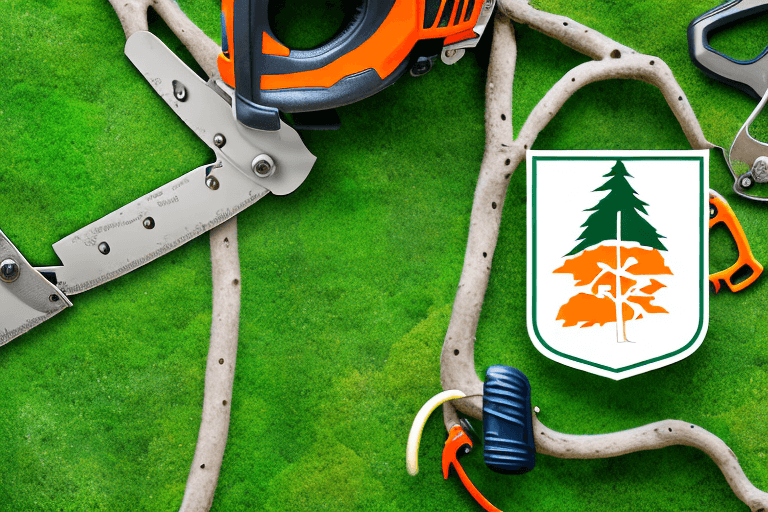
Assessing Safety Measures and Equipment
Tree removal can be a dangerous task, so it is important to hire an arborist who prioritizes safety. Ask the arborist about their safety protocols and the equipment they use to ensure that the job is done safely and efficiently. A reputable arborist will have a comprehensive safety plan in place, including measures to protect both their crew and your property.
Consider asking the arborist about their approach to tree removal. Are they equipped to handle different types of trees and challenging situations? Do they have specialized equipment, such as cranes or aerial lifts, to safely remove trees in hard-to-reach areas? These factors can make a significant difference in the outcome of the project and the safety of everyone involved.
Furthermore, inquire about the arborist’s insurance coverage. Accidents can happen, even with the most experienced professionals. Ensuring that the arborist has liability insurance will protect you from any potential financial liabilities in case of accidents or property damage during the tree removal process.
By carefully considering these factors, you can make an informed decision when hiring an arborist for tree removal in the Hills District. Remember to ask for multiple quotes and compare the services offered by different arborists. Ultimately, choosing an arborist who is certified, experienced, and safety-conscious will give you peace of mind knowing that your tree removal project is in capable hands.
The Process of Tree Removal in the Hills District
The process of tree removal in the Hills District involves several steps that ensure the safety and efficiency of the project. However, it is important to note that tree removal should only be carried out by trained professionals to avoid any accidents or damage to property.
Initial Assessment and Planning
Before beginning the tree removal process, an arborist will conduct an initial assessment to determine the health and stability of the tree. This assessment is crucial as it helps the arborist understand the condition of the tree and identify any potential risks or complications that may arise during the removal process.
During the assessment, the arborist will carefully examine the tree for signs of disease, decay, or structural weaknesses. They will also assess the surrounding area for any potential hazards that may affect the tree removal process. This includes checking for nearby power lines, buildings, or other structures that could be damaged if the tree falls in the wrong direction.
Based on the assessment, a plan will be developed to ensure that the tree is removed safely and without causing any damage. This plan will take into consideration the size and location of the tree, as well as the equipment and techniques that will be used to carry out the removal.
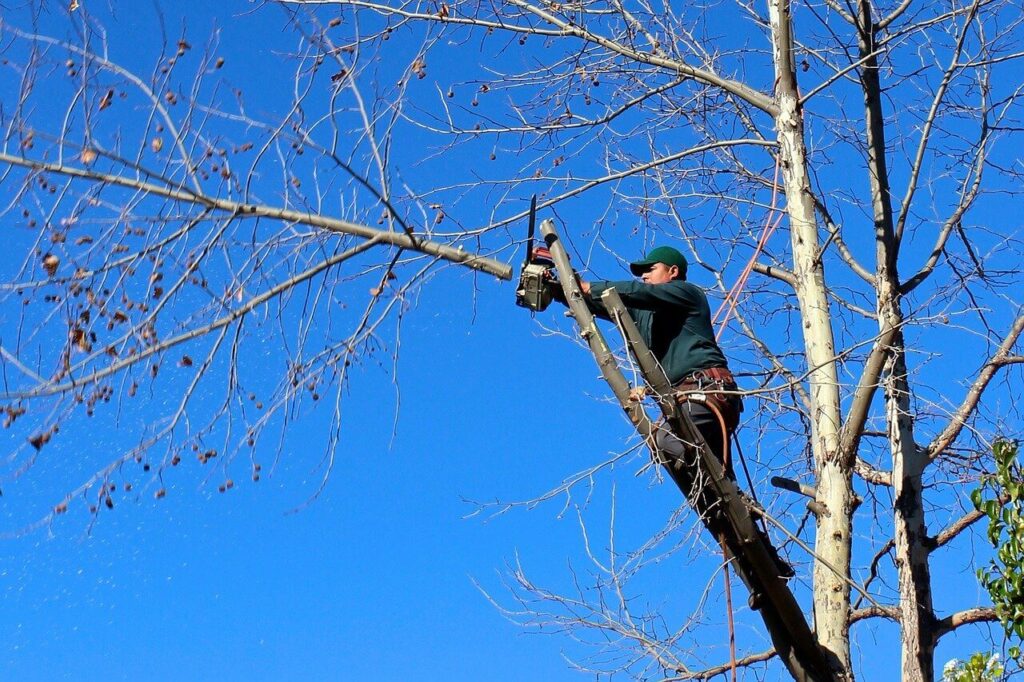
Execution and Clean-up
Once the assessment and planning stage is complete, the arborist will proceed with the tree removal process. This is where their expertise and specialized equipment come into play.
The arborist will carefully cut down the tree in sections to minimize the risk of damage to surrounding structures or plants. This technique, known as sectional felling, involves making strategic cuts at specific points on the tree to control its direction of fall. By carefully removing one section at a time, the arborist can ensure that the tree falls safely and in the desired direction. Learn more about cleaning the canopy & pruning.
Throughout the removal process, the arborist will use various tools such as chainsaws, ropes, and rigging equipment to safely lower the tree sections to the ground. This requires skill and precision to avoid any accidents or damage to property.
After the tree has been successfully removed, the arborist will clean up the area and remove any debris. This includes removing branches, leaves, and other tree remnants that may have fallen during the removal process. The arborist will also ensure that the area is left clean and tidy, ready for any future landscaping or construction work.
It is important to note that tree removal should always be carried out in compliance with local regulations and permits. In some cases, a permit may be required before any tree removal can take place. This is to ensure that the removal is done responsibly and in accordance with environmental guidelines.
In conclusion, the process of tree removal in the Hills District involves careful assessment, planning, and execution to ensure the safety of both the arborist and the surrounding environment. By following these steps, trained professionals can efficiently remove trees without causing any damage or harm.
Cost Considerations for Tree Removal Services
When it comes to tree removal in the Hills District, cost is an important factor to consider. The cost of tree removal can vary depending on several factors.
Understanding the Cost Breakdown
Tree removal costs are typically broken down into several components. These may include the size and health of the tree, the complexity of the removal process, and the equipment required. It is important to discuss these factors with the arborist to ensure that you have a clear understanding of the cost breakdown.
Tips for Getting a Fair Quote
When obtaining quotes for tree removal services, it is important to get multiple estimates to compare prices. However, price should not be the only determining factor. It is equally important to consider the arborist’s qualifications, experience, and reputation. Selecting a reputable arborist who provides a fair quote ensures that you receive high-quality service at a reasonable price.
Legal and Environmental Considerations
When it comes to tree removal, there are legal and environmental considerations that need to be taken into account.
Understanding Local Tree Removal Laws
Before removing a tree, it is important to familiarize yourself with the local tree removal laws and regulations. Some trees may be protected, requiring permits or permission before they can be removed. Violating these laws can result in fines or legal consequences, so it is essential to follow the proper procedures.
Ensuring Environmental Responsibility
Tree removal can have a significant impact on the environment, so it is important to hire an arborist who follows environmentally responsible practices. This includes properly disposing of waste, recycling wood when possible, and replanting trees to maintain the ecological balance.
By considering these factors and choosing the right arborist for tree removal in the Hills District, you can ensure that the job is done safely, efficiently, and in compliance with all necessary regulations. Tree removal is a complex task that requires the expertise and knowledge of a professional arborist, so it is important to take the time to find the right person for the job.
